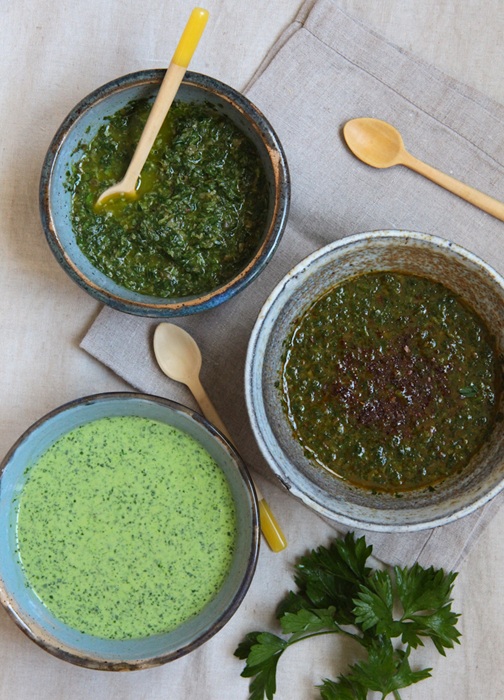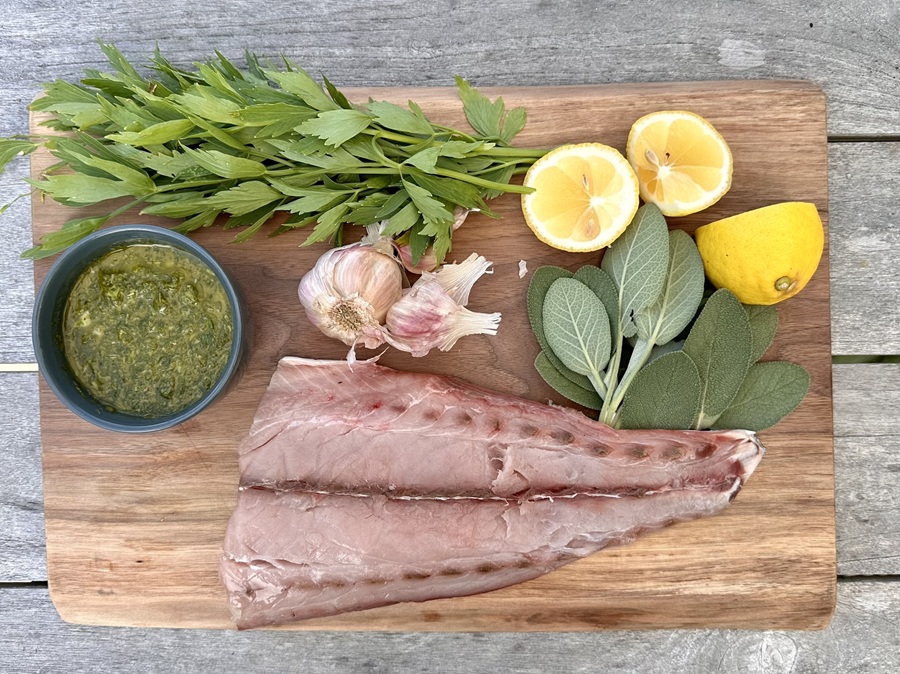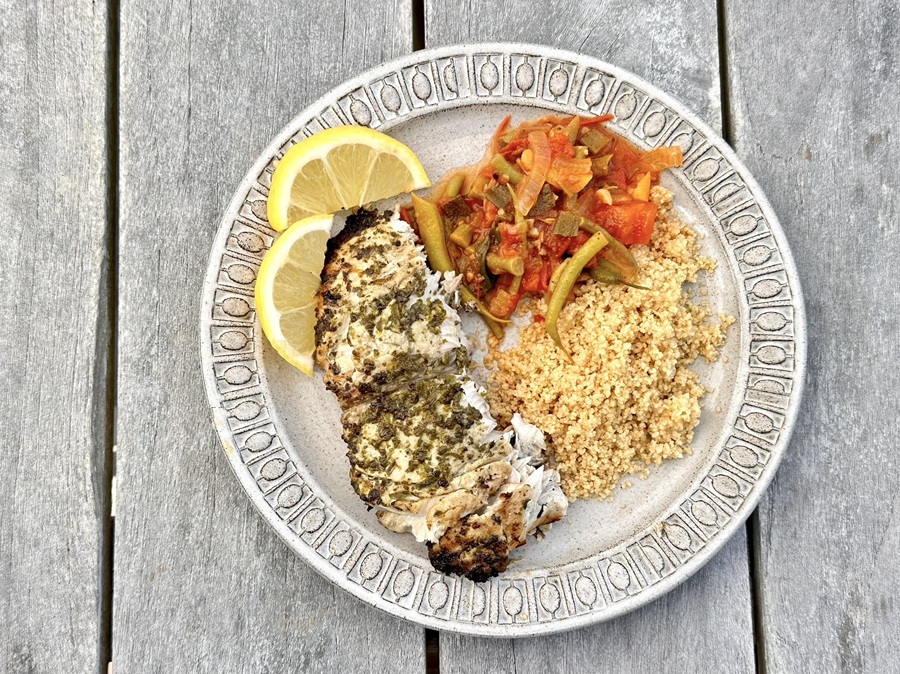I never met a green sauce I didn’t like. And clearly, a lot of people around the world feel the same, as many cultures have a signature herbal sauce made of verdant leaves.
My first — and still a favorite — is the tart salsa verde of the Mexican cuisine that I grew up with in Texas. It’s made with cooked tomatillos, cilantro, and chiles and most often used for enchiladas. I later became a fan of the creamier version made with raw tomatillos, cilantro, and avocados that adds a fresh, almost cucumber note to tacos.
There’s also green goddess, one of the best salad dressings humans have ever conceived, with tarragon, parsley, anchovy paste, sour cream, and mayonnaise.
What makes these sauces essential in my kitchen are the green flavors of the herbs: the mineral quality of parsley, the subtle onion of chives, the anise notes of tarragon, and the pungency of cilantro.

Lately, I’ve experimented with a broader roster of bright green herb sauces that work well as marinades on grilled fish, particularly bluefish, but also striped bass, salmon, and halibut. These sauces are garden-forward, and I enjoy being able to walk outside and pick the herb leaves by the handful. For that reason, I’d say it’s hard to plant too much parsley, basil, chives, or mint.
One of my new additions is Italian salsa verde, which is traditionally only parsley-based, though I like to add basil as well. Mainly because I really love basil — I’m not sure I trust anyone who doesn’t. The sauce’s piquancy comes from the sharpness of the parsley but also from capers and lemon. A bit of anchovy paste might be hard to discern, but it adds a layer of umami to the mixture. At first, I thought I might leave it out when serving the sauce with full-bodied bluefish, since I didn’t want it to be fishier than it should be. But it turns out this is the perfect sauce for meaty fish with lots of oils because it brightens them up so well.
The sauce originated in the Piedmont region of Italy where it is known as bagnetto verde (green bath). Indeed, it’s delicious enough that you might want to bathe in it. I knew this sauce was a hit the first time I served it at a dinner party because everyone kept asking for it to be passed so they could spoon more on their plates. Lemon provides the right acidity when you’re making this to serve with fish, but there’s a version for pairing with meat dishes including the Italian classic bollito misto (boiled meats), and it uses red wine vinegar. A similar Milanese version made of chopped parsley, lemon peel, and garlic is called gremolata.

I’ve been making chermoula, a North African green sauce, since a chef friend gave me a recipe back in the early 1990s. Like salsa verde, it goes with most everything. This green sauce is richer with the spices of the region: cumin, red pepper, paprika, ginger, garlic, and a hint of cloves. It’s the perfect sauce to accompany a tagine, but it also transports grilled fish somewhere special. Because it is spicy and strongly flavored, resist the urge to marinate delicate fish like striped bass or halibut in it; serve it on the side instead. You can turn down the heat on this one by using less red pepper.
I became well acquainted with Peru’s aji verde (green chile) sauce while living in Jackson Heights, Queens, where there is a large population of South American immigrants. It’s a mandatory side for many of the rotisserie chicken restaurants that line the boulevard. Because it includes jalapeños and serrano peppers, it’s hotter than my other green sauces, so I use it only as a side sauce, letting people add as much or as little as they want.
The final sauce is one I invented myself one evening when I wanted to find a use for lovage, a tall celery relative that had grown large in my raised beds but wasn’t factoring into my recipes enough to justify its space. Lovage was popular in Tudor England, where it was used in soups and stews but also medicinally to remove freckles. A bath scented with lovage leaves was supposed to make a bather irresistible to his lover afterwards. For the record, I haven’t tried that yet.

My improvised recipe was also inspired by the fact that my lovage grew directly next to a robust sage plant. Both plants provided the chopped leaves for a pungent but not overwhelming sauce that, though raw and fresh, possesses a warming quality from the sage and the smoky, curry-like notes of the lovage. Everyone I’ve served the sauce to loves it, even though they can’t exactly figure out what the herbs are. Somehow the two sisters that sit so close to each other in my garden blend into an imperceptible union of flavors.
Each of these sauces works well on other foods: grilled vegetables, chicken prepared in almost any way, or steak. But I like them most on bluefish. Partly because I meet a lot of folks who think it’s “too fishy,” I enjoy serving our fresh local catch to prove to guests how good it is. I also like that bluefish is often half the price of halibut or striped bass in the markets.
I don’t, however, enjoy the smell of bluefish when it’s cooked indoors. I always grill it outside so the memory of making it won’t linger for several days. Not so with my green sauces: there is never anything left of them after dinner.
Recipe note: The amounts here are merely guidelines to suggest my ideal proportions. Feel free to experiment. I never measure when I make these sauces. All serve four, but double the amounts for a dinner party so people can help themselves to generous spoonfuls without reserve.
SAGE-LOVAGE GREEN SAUCE
1 packed cup sage leaves
1½ packed cups lovage leaves
¾ cup olive oil
Zest and juice of 1 lemon
½ tsp. salt
Black pepper
Combine all the ingredients in a food processor. Whiz until finely chopped into a medium-thick sauce. Adjust seasoning and serve.
ITALIAN SALSA VERDE
1 medium bunch flat-leaf parsley, leaves and small stems only
1 packed cup basil leaves
2 Tbsp. capers, drained and rinsed
1 garlic clove
Zest and juice of 1 lemon
½ cup olive oil
½ tsp. anchovy paste
Salt and pepper, allowing for saltiness of the capers
Combine all the ingredients in a food processor. Whiz until finely chopped into a medium-thick sauce. Adjust seasonings and serve.
CHERMOULA SAUCE
1 tsp. smoked or plain paprika
1 tsp. ground cumin
½ tsp. ground ginger
1 medium bunch flat-leaf parsley, leaves and small stems only
1 medium bunch cilantro, leaves and small stems only
1 Tbsp. chopped fresh ginger
1 garlic clove
½ cup olive oil
Juice of 1 lemon
½ tsp. salt
- Lightly toast the spices in a hot dry pan. Be careful: they burn quickly.
- Combine all the ingredients with the lemon and oil in a food processor. Whiz until finely chopped into a medium-thick sauce. Adjust seasoning and serve.
AJI VERDE SAUCE
3 jalapeño peppers, seeds and white membrane removed if you want it less spicy
1 serrano pepper, seeds and white membrane removed if you want it less spicy
1 cup flat-leaf parsley leaves
1½ cup cilantro leaves
¼ cup olive oil
6 Tbsp. sour cream
½ tsp. salt
Combine all the ingredients in a food processor. Whiz until finely chopped into a sauce. Adjust seasoning and serve.
